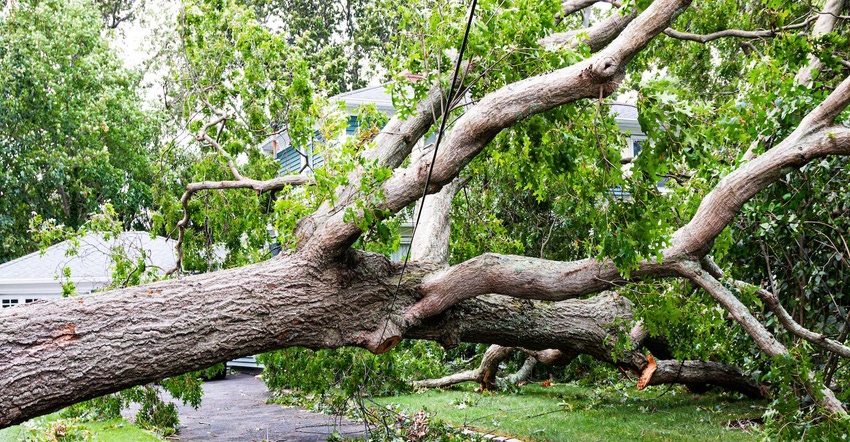Roofing in the Aftermath of Hurricane Ida
Roofing contractors can lend a hand by making themselves seen and available in the affected neighborhoods.

On Sunday, Aug. 29, Hurricane Ida blew through the Gulf of Mexico and made landfall in Louisiana, precisely 16 years since Hurricane Katrina wreaked havoc on the region. With 170-mile-an-hour winds and heavy rainfall, the Category 4 hurricane knocked out power, downed trees and tore off roofs. Based on an AccuWeather estimate, the total economic loss and property damage could reach $70 to $80 billion.
Assessing the Damage
Ida was the fifth-largest hurricane to make landfall in the United States. It took out the area’s eight power transmission lines, resulting in more than a million businesses and residents without electricity, including all of New Orleans. The local power company Entergy has advised its customers they may experience power outages for weeks.
In addition, the storm caused most oil and gas production in the area to come to a halt. That shutdown will likely inflate gas prices in the weeks to come. The storm also hit cell towers, which affected network hubs and left wireless phone service unreliable throughout the area. Authorities have advised residents who evacuated to stay away as long as possible, as extreme heat will be brutal without electricity and sufficient water supplies.
So far, the hurricane is being attributed to seven deaths. Of those, two were caused when a highway washed out and collapsed, injuring 10 others. Search and rescue teams continue to patrol the area.
In the meantime, residents who stayed in Louisiana are walking their properties, assessing the damage, and trying to determine what to do next. Many have encountered fallen power lines and splintered oak trees, as well as destroyed roofs and scattered shingles. Large facilities such as the Ochsner Health hospital system also suffered roof damage.
Repairing and Rebuilding
In the aftermath of a severe weather event, it is essential the property owners inspect their structures and determine what repairs are necessary. Roofs are often prime targets of strong winds, so many homes and businesses will need to replace or repair them. As these residents and business owners contend with other issues—including lack of water and electricity, no internet, and spotty cell service—handling a roof damage claim may be overwhelming.
Roofing contractors can lend a hand by making themselves seen and available in the affected neighborhoods. Let customers know you are there to help—from inspecting roofs to doing the work and making their roofs good as new. Customers need to understand that even minor roof damage can worsen over time, leading to water leaks and damaged belongings. Depending on their insurance policies, they likely have a limited amount of time to file a claim after the storm. That process can be lengthy, so there is no reason to put it off. And given the material delays that the construction industry is witnessing, the sooner they file a claim, and you order materials, the better.
Keep in mind that customers who weathered a hurricane may be grateful it is over, but they may also be anxious and impatient. Many homeowners may be wary of the hard sell from roofing contractors, so do not prey on their emotions. Instead, assure them of your credentials, licensing, and experience. Take time to explain the process and the repair or replacement timeline with them. And be sure that their insurer thoroughly explains what costs will be covered by their policy and what will not. You want to avoid unwelcome surprises.
Looking Ahead
Sad to say, the United States will likely experience many severe storms like Hurricane Ida in the years ahead. The effects of climate change—including intense wildfires, widespread drought, deadly flooding and more ferocious storms—are apparent around the world, so we should expect more devasting weather. With that in mind, the roofing industry must use the most weather-resistant materials possible. When initially installing, repairing or replacing a roof, talk to your customers about their choices and help them understand the benefits of their roof system. By using quality materials at the outset, they will be better prepared for the storms ahead.
Disclaimer: The information contained in this article is for general educational information only. This information does not constitute legal advice, is not intended to constitute legal advice, nor should it be relied upon as legal advice for your specific factual pattern or situation.
Read more about:
steep slope roofingAbout the Author(s)
You May Also Like




